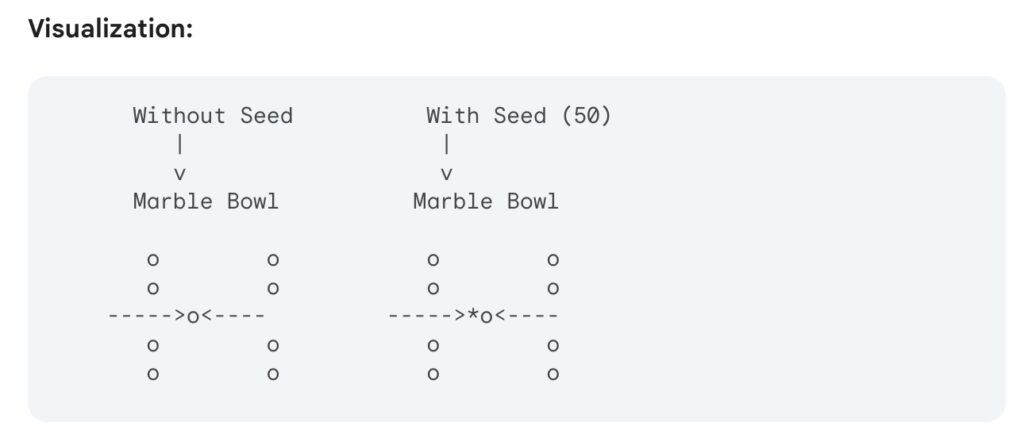In NumPy, the seed function, specifically numpy.random.seed(), plays a crucial role in generating pseudo-random numbers. While computers cannot generate true randomness, they use algorithms to produce sequences of numbers that appear random. The seed function acts as a starting point for this algorithm, influencing the specific sequence of numbers generated.
Here’s a breakdown of its functionality:
1. Setting the Seed:
- You provide an integer value as the argument to
seed. This value acts as the initial state for the random number generator algorithm. - Different seed values will result in different sequences of random numbers. For example, using
seed(50)will generate a different sequence than usingseed(100). - If you don’t explicitly set the seed, NumPy uses the system time by default, leading to a different random sequence each time you run your code.
2. Reproducibility:
- The primary benefit of using
seedis reproducibility. By setting the same seed, you can ensure that your code generates the exact same sequence of random numbers every time you run it. This is valuable for:- Debugging: If you encounter an issue that relies on specific random numbers, you can reproduce it by using the same seed.
- Testing: You can run your code with different seeds to ensure it handles various random number sequences correctly.
- Comparing results: When comparing different algorithms or experiments, using the same seed ensures you’re comparing them on an equal footing.
3. Determinism vs. Randomness:
- It’s important to remember that even though
seedmakes your code deterministic (meaning it produces the same output for the same input), the generated numbers are still pseudo-random. They are not truly random, but rather calculated based on the seed and the algorithm.
Check the hands-on example below:
Certainly! Here’s a pictorial representation of how the seed function in NumPy influences random number generation:
Initial State:
- Imagine a bowl filled with colored marbles representing all possible random number values.
Without Seed:
- Each time you call a random number function, the code blindly grabs a marble from the bowl.
- Since there’s no starting point, different runs will likely choose different marbles, leading to unpredictable sequences.
With Seed:
- The
seedfunction acts like a marker inside the bowl, pointing to a specific location. - Whenever you call a random number function, the code starts from that marked location and picks marbles in a predetermined order based on the seed value and the algorithm.
- If you use the same seed, the code will always follow the same path through the bowl, picking the same sequence of marbles in the same order. This leads to reproducible results.

In this metaphor, the marbles represent random numbers, and the marked marble with * indicates the starting point determined by the seed. Also, do remember, while predictable, the generated numbers are still pseudo-random and calculated based on the seed and algorithm, not truly random.
To summarize:
The
seedfunction in NumPy allows you to control the sequence of random numbers generated. By giving it an integer value, you tell the random number generator where to start, ensuring you get the same predictable sequence every time you run your code with that seed. This is particularly useful for debugging, testing, and comparing results as it eliminates randomness as a factor. However, remember that these are still pseudo-random numbers, carefully calculated based on the seed, not truly unpredictable like real randomness.In essence,
seedenables you to trade true randomness for control and reproducibility. This trade-off is valuable in many situations, but always keep in mind the nature of the generated numbers when interpreting or relying on them.

